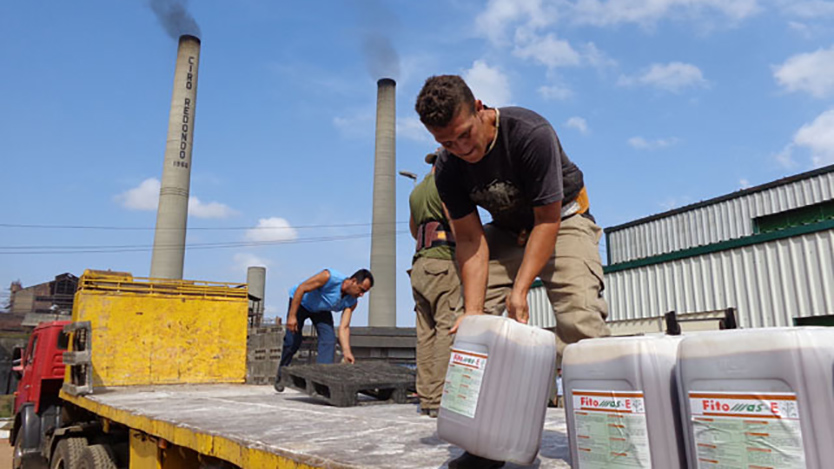
Obtaining productions derived from the industrial processing of sugar cane such as alcohols, rums, bagasse boards, molasses, food for human and animal consumption, as well as the generation of electricity, during the recently completed 2022-2023 harvest in Ciego de Ávila , is a sign of the diversification of the sector and the search for new income beyond those from sweet grains.
On the subject, Invasor inquired with Eduardo Larrosa Vázquez, director of coordination and technical supervision of Azcuba Sugar Group in the territory, who said that the promotion of these alternative products is part of the new economic scheme of that national corporation, in which many of they have links with other entities of the country's economy.
It stands out that in the period it was possible to produce more than 14,900 tons (t) of honeydew, which has had as its main destination the production of brandy and alcohol. An important part has also been directed towards the Food Industry and to obtain animal feed.
In the case of this raw material, a syrup with a concentration between 60 and 65 degrees Brix, taken to the distillery of the Enrique Varona Agro-industrial Sugar Company (EAA), it was possible to produce 48,000 hectoliters of different types of alcohol from A (to 100 degrees) up to F5, products that are linked to other productive entities in the national territory, Larrosa Vázquez specified.
During the harvest stage, more than 1,000 tons of torula cream were produced, and more than 72,000 liters of the bio-stimulant for crops Fitomas-E, in the UEB of the EAA Ciro Redondo. Likewise, the Primero de Enero board factory produced more than 31 cubic meters of this material and the intention is to continue the production process during the coming months.
In Ciro Redondo lands, during the course of this sugar campaign, the Bioelectric plant close to the Ciro Redondo power plant contributed to the National Electroenergetic System about 65,263.45 megawatt hours (MW/h), closing on May 18, as Invasor previously reported.
As it was explained by the engineer Ariel Díaz Román, head of that renewable energy plant, at the beginning of the harvest that proportion of biomass to be burned was half and half: 50 percent bagasse and 50 percent marabou; however, the latest data spoke of a ratio of 76-24, which guaranteed greater efficiency and sustainability in the consumption of fuel material.
The purpose is to continue the marabou harvest for the start-up of the Bioelectric plant during the summer months, and thus contribute in that period in which the demand for electricity increases in Cuba.
Among the projections regarding the production of derivatives for the coming months, Larrosa Vázquez added, is that, upon completion of the Primero de Enero plant, its Technical Standard 52 (process referred to cleaning, disassembly, conservation and diagnosis of the equipment of the industry), the possibility is evaluated, sometime before the end of the year, of resuming the production of molasses, so that the distillery produces alcohol inactive (non-harvest stage).
Good news is the execution in the Enrique Varona power plant, in the municipality of Chambas, of a repair aimed at activating it with sufficient equipment to materialize, before the end of this year or in the first months of 2024, that it can be incorporated into manufacturing in This is the molasses, which will have an impact on lowering production costs.




